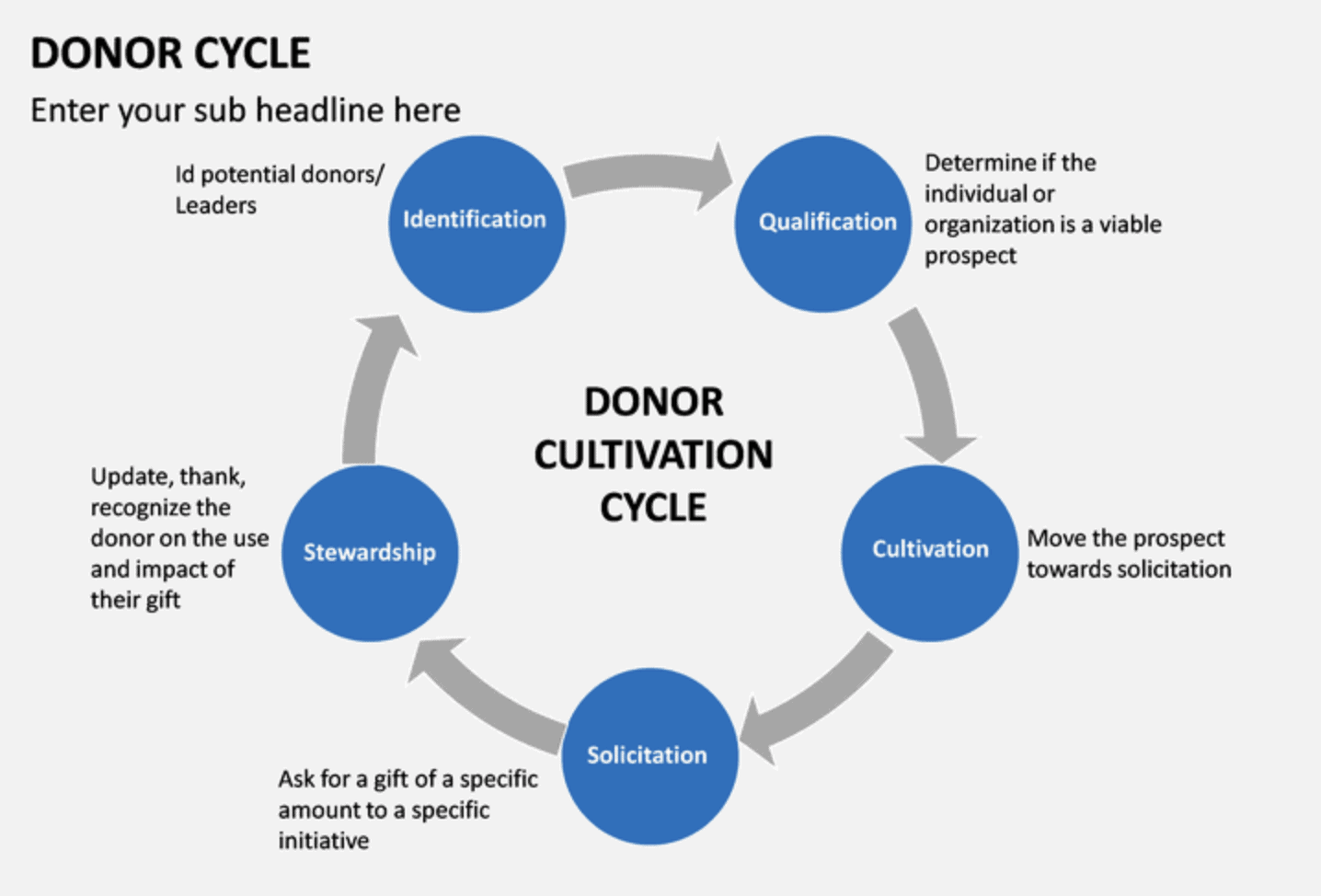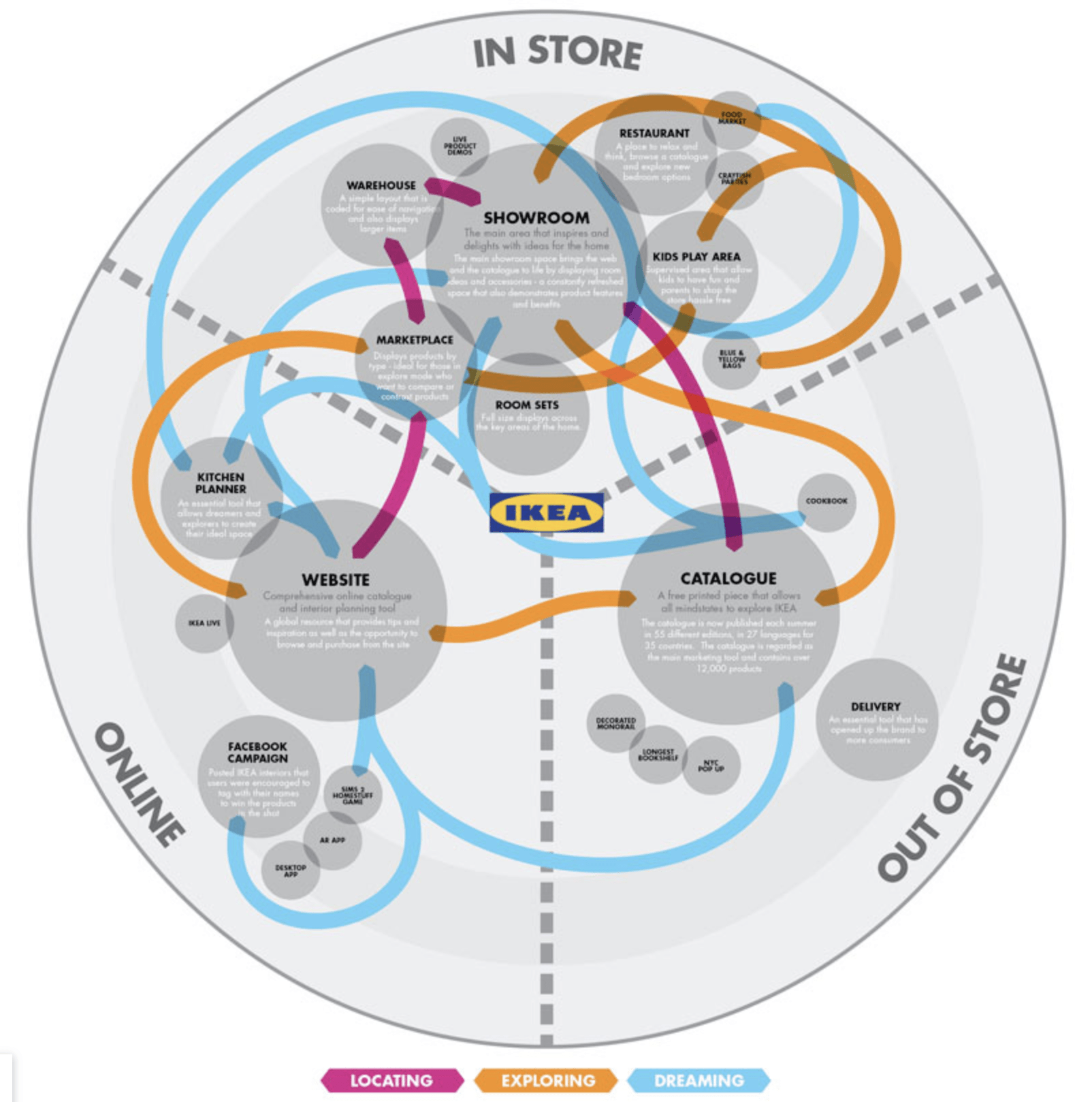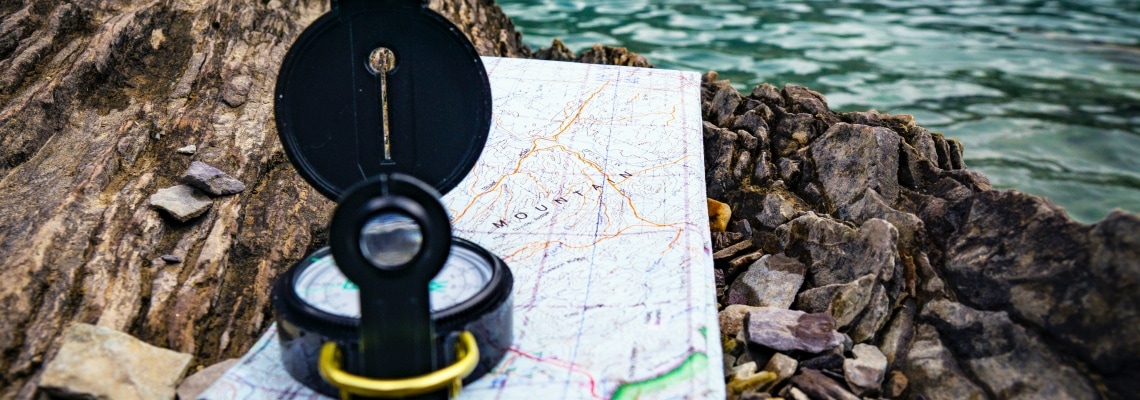From the moment non-profit professionals begin their fundraising careers they’re told about the Donor Cultivation Cycle. First identify prospective donors, qualify them, cultivate, ask, thank/steward and then start the process all over again, and again, ad infinitum.
For the most part, it’s a useful tool and a fair representation of how donor cultivation and stewardship should be done.

Source: WealthEngine **
However, with growing non-profit competition for donors’ attention, the surge in digital platforms and the increase in research on donor psychology over the last few years, this model no longer reflects the reality of how donors engage with non-profits. We can go as far as saying that it’s an organization-centric approach to donor engagement – steps and actions done to donors based on a structure that fits the organization’s needs and goals.
Considering much of what we espouse at conferences as fundraising best practices – be donor-centric, focus on storytelling and on good data – this model seems quite disingenuous. What this approach fails to consider are some very important aspects of authentic and successful donor engagement:
Insights
A robust and successful engagement strategy must be based on solid data and insights. This is where you get to learn all you can about the organization’s donors such as demographics, values, characteristics, interests, etc. The current cultivation cycle makes no mention of this, and while the identification stage could include this, it fails to make it an integral part of the cultivation process. Without this vital step, the odds of delivering the results wanted are diminished, potentially resulting in wasted resources and risking losing donors.
Acquisition channels
With the increase of digital platforms, donor acquisition happens through a multitude of channels. To be truly donor centric, engagement opportunities must be developed based on donors’ communication preferences, habits, and behaviour. The current cultivation model fails to factor the particularities of the channels that donors use to enter into a relationship with an organization. Instead it offers a cookie-cutter approach of pooling all donors into the same category, thereby disregarding donors’ past behaviour, interests and preferences..
Change in interest
Relationships with donors are not linear. There are ebbs and flows that can change from time to time. The current circular cultivation model doesn’t take into consideration the ever changing and evolving nature of donor relations and engagement levels and it assumes donors will remain in the same loop. Now imagine donors as the ocean’s current, moving around, exploring different programs in your organization and warming up to some of them and cooling off on others.

Source: How do currents work? TED-ed
As donors move around, we need to adapt and offer different ways for donors to remain or increase their engagement. Alternatively they will lose interest and move on – and if they do, we need to think through re-engagement strategies.
Take for instance IKEA’s customer journey map. Looking at the different ways in which customers engage with the brand – in store, online and out of the store – the company connects how customers can move in and out of different channels in order to remain engaged.

Now can you imagine getting together with your colleagues and designing these journeys for your donors that begin from the moment they join the organization with their first gift all the way to the ultimate gift, a legacy gift? Wouldn’t that ensure that (1) donors are attended to in the way they want, (2) they gradually increase their financial contributions throughout their journey with your organization, and finally, (3) they consider a gift in their will?
If this is something you’d like to explore for your organization, give me a shout. I am fine tuning a workshop where we work together to develop your donor journeys. Pop something in my calendar and we’ll talk about how the workshop can help you create impactful and data-informed engagement strategies.
** it’s important to note that the donor cultivation cycle was not created by Wealth Engine. This image was used because it’s the clearest that was found at the time of this publication.


